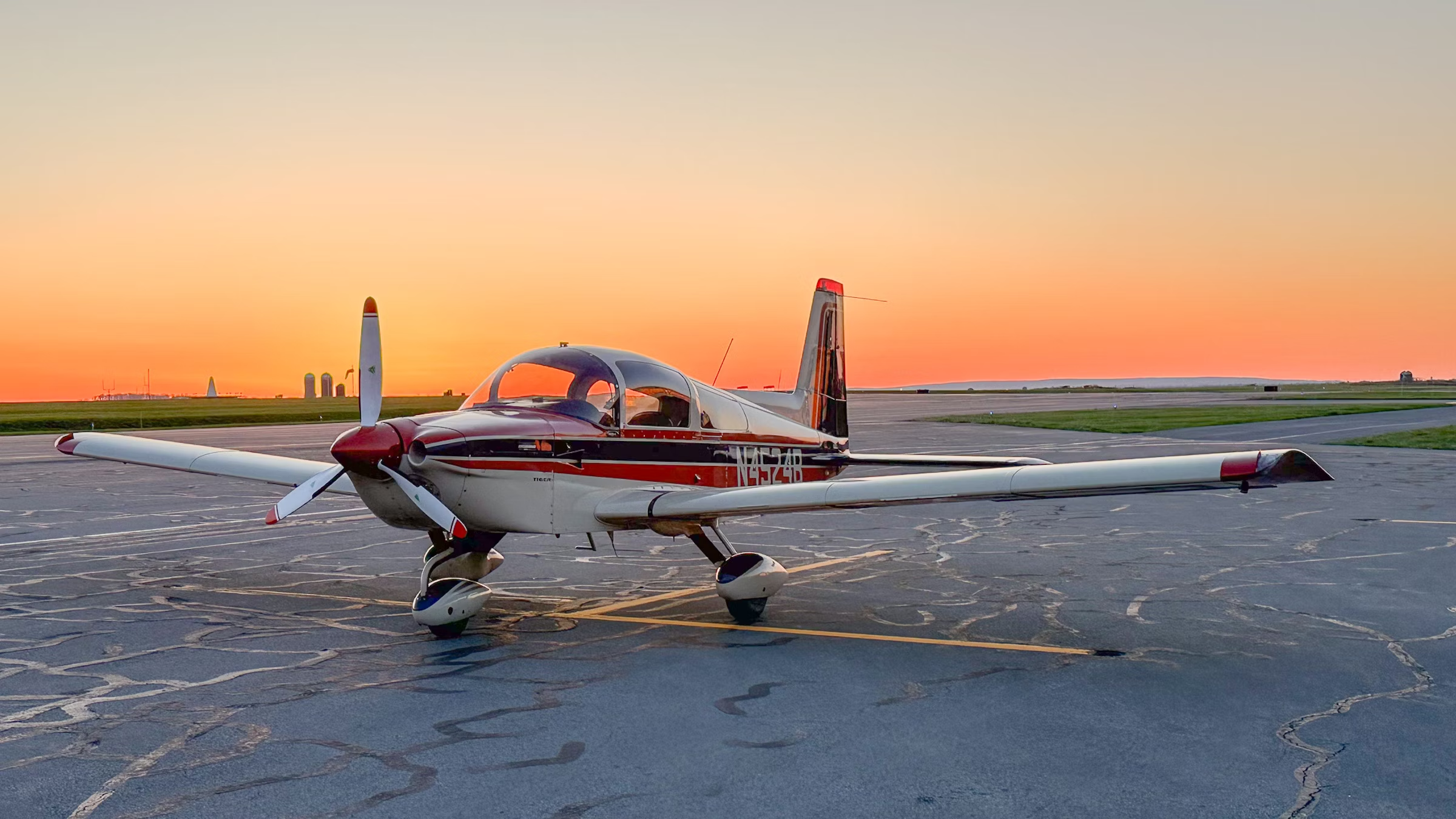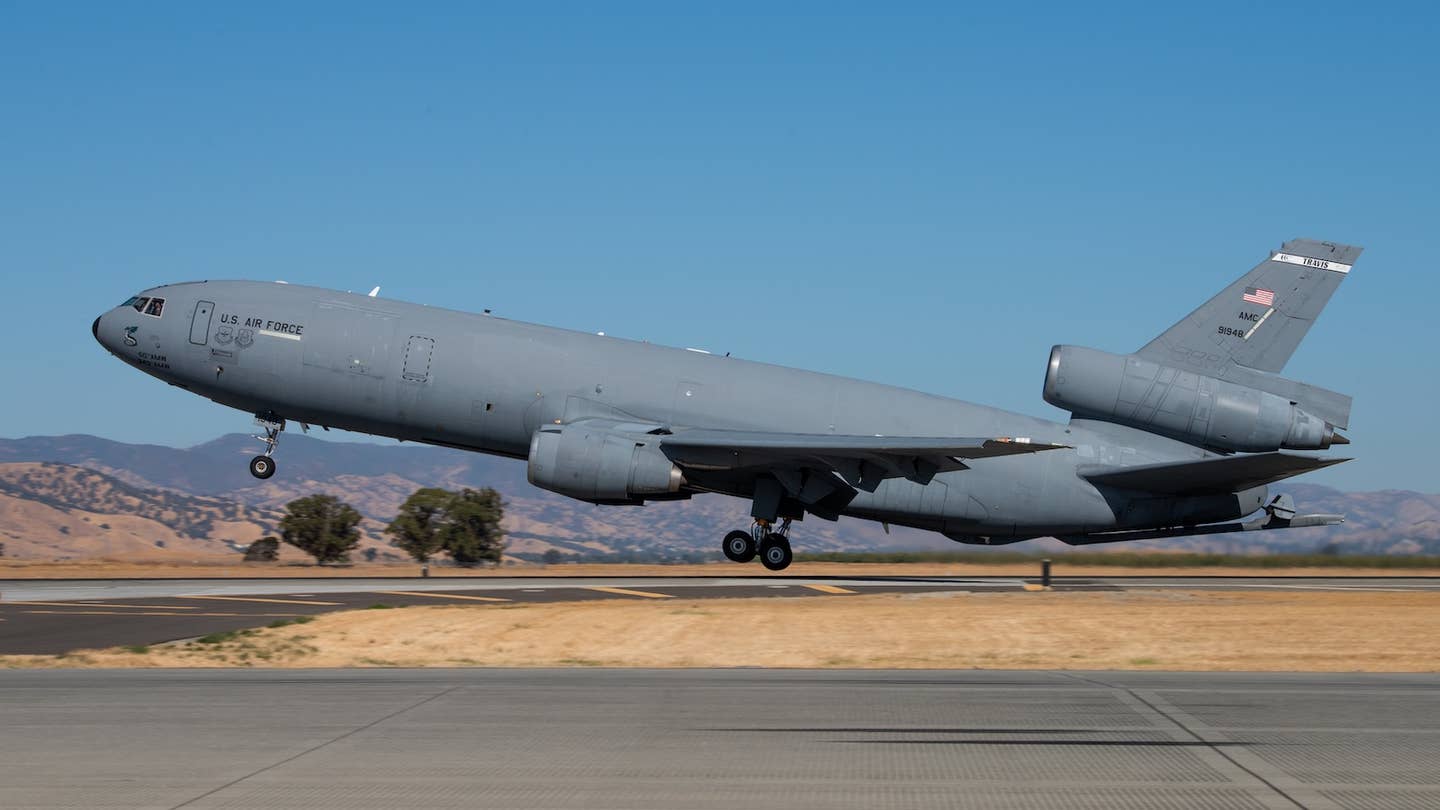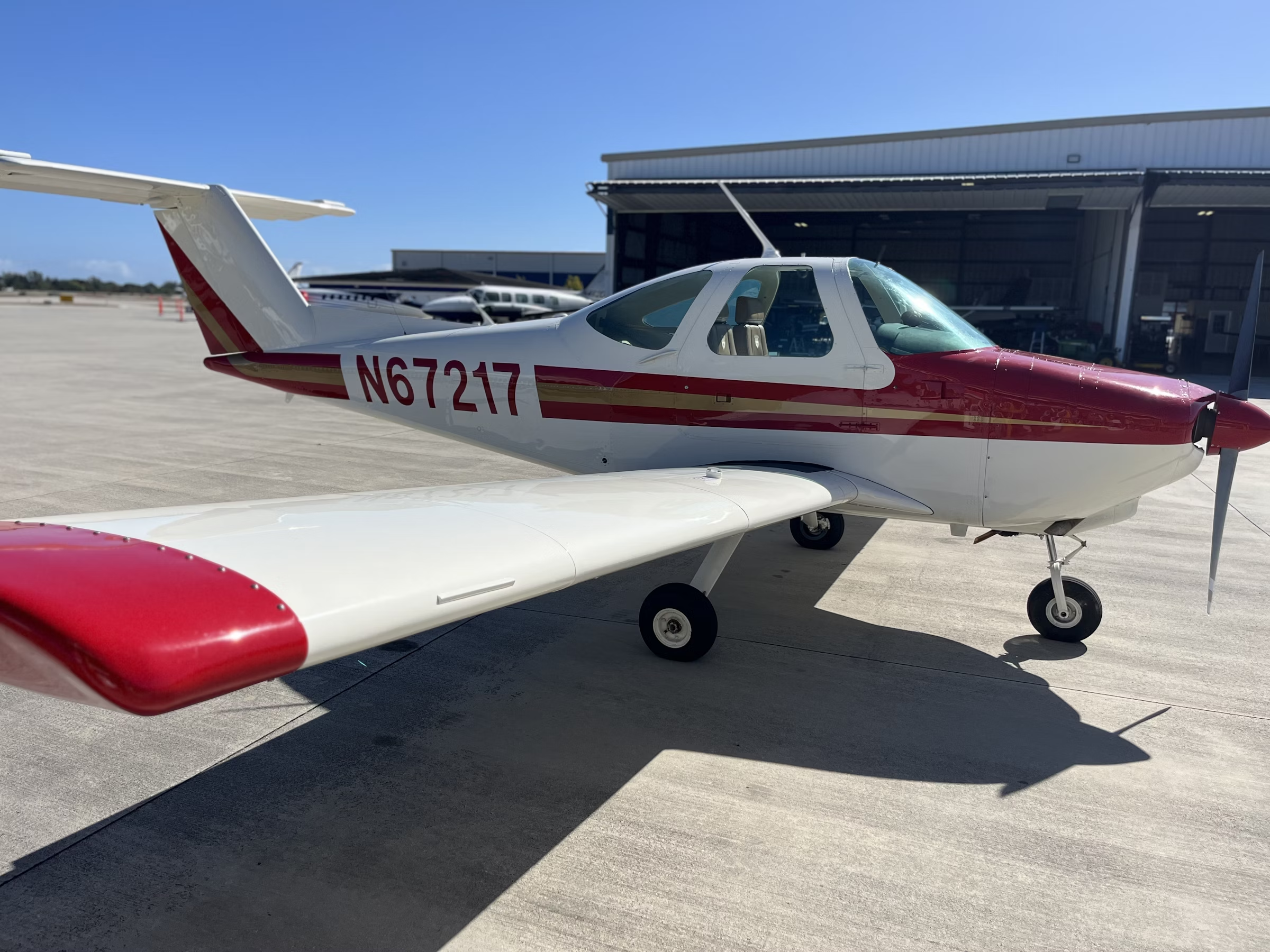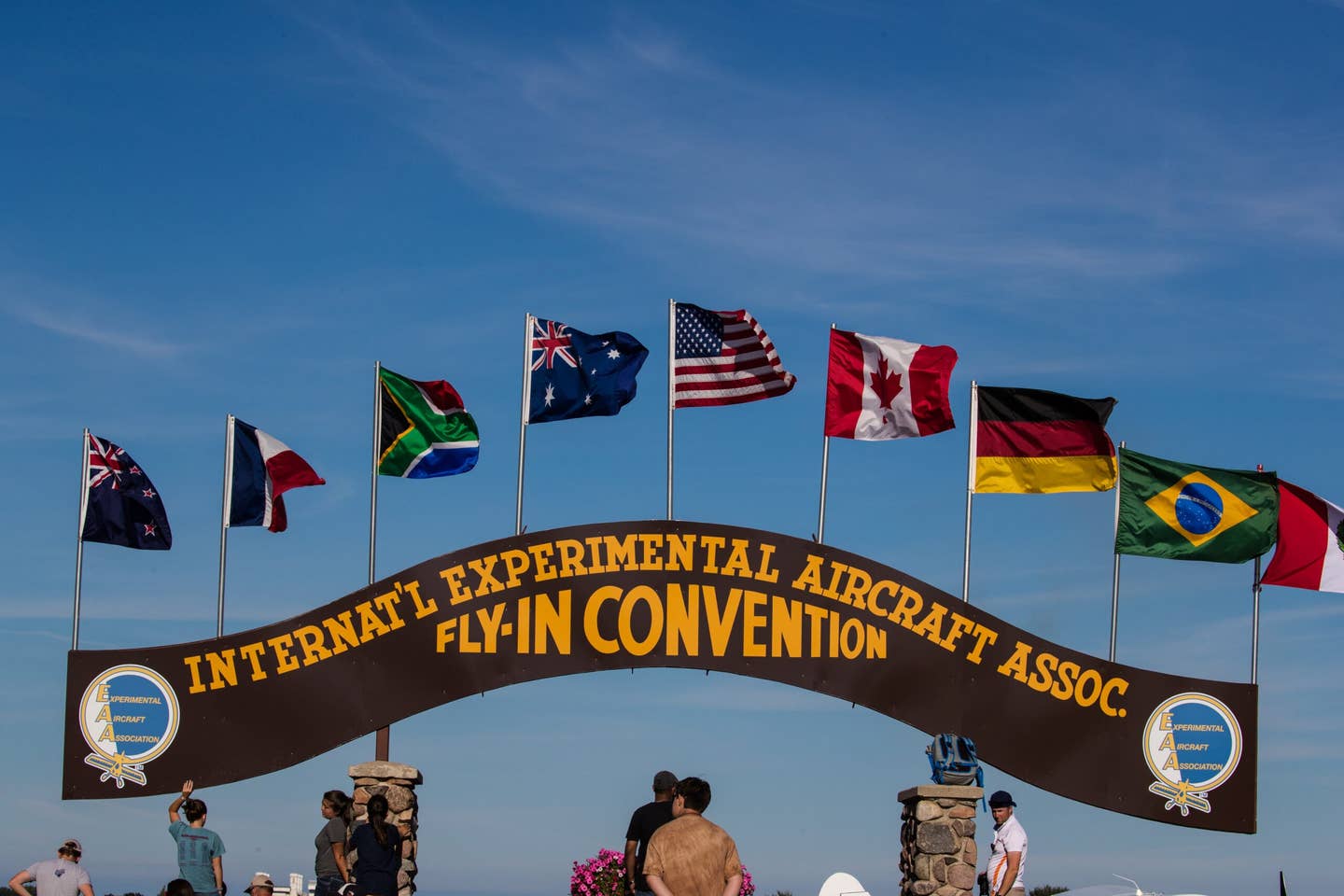The Hughes XF-11, a Behemoth That Never Made It Out of Testing
The aircraft was capable of reaching 42,000 feet with a 5,000-mile range and thought to be an ideal solution for photo reconnaissance.
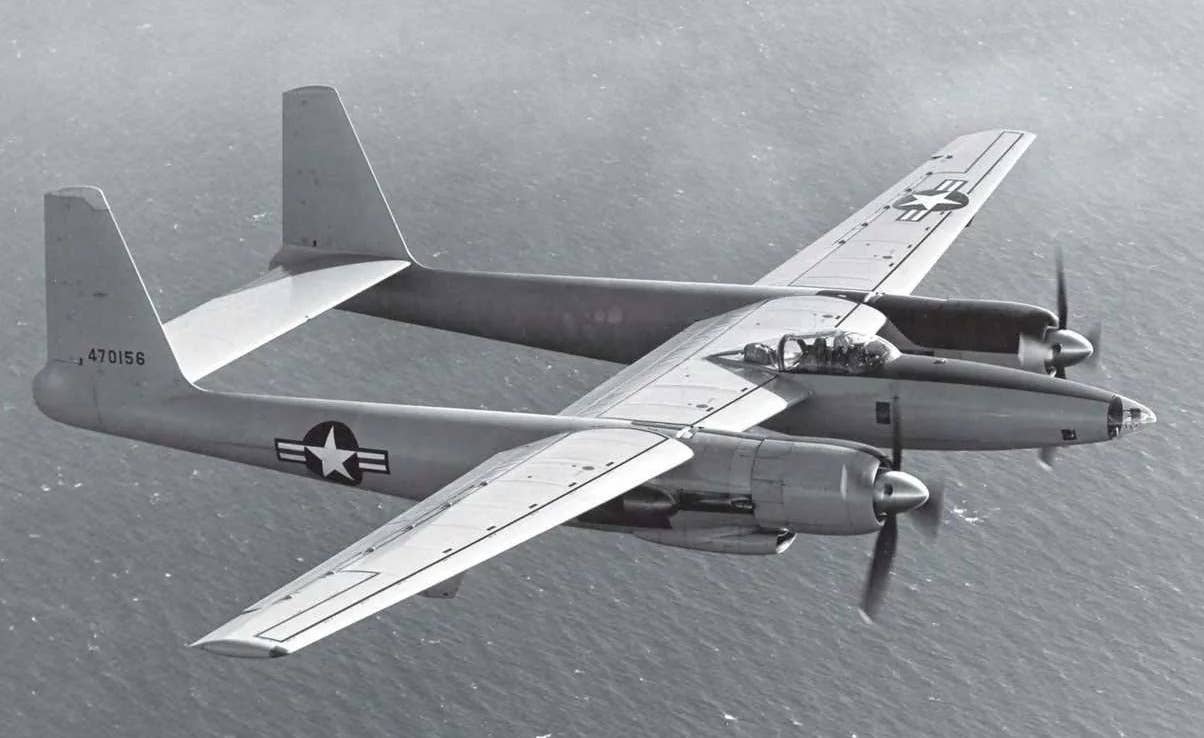
Resembling the far more common Lockheed P-38 Lightning, the Hughes XF-11 was roughly twice the size but never achieved full-scale production. [Courtesy: U.S. Air Force]
At first glance, it might be mistaken for a Lockheed P-38 Lightning. The unique twin-tail boom arrangement, the shoulder-mounted wing positioned just behind the cockpit, and the small, bullet-shaped cockpit section itself extending forward of the wing’s leading edge create a nearly identical silhouette.
But silhouettes mask details and size, and a closer look reveals how the massive Hughes XF-11 was a vastly different aircraft—with a vastly different fate.
The size of the XF-11 isn’t readily apparent in most photos. Only when a person or automobile is positioned next to it does the scale really sink in. At over 101 feet, the wingspan is greater than that of an early Boeing 737, and at over 58,000 pounds, it’s heavier than a 50-passenger regional jet.
The scale of the engines is equally impressive. Compared with the 1,600 hp Allison V-12s fitted to the P-38, the XF-11 utilized massive Pratt & Whitney R-4360 Wasp Major 28-cylinder radials—the same engines found on the Convair B-36 Peacemaker. Unlike the Peacemaker, however, each of the XF-11’s engines was designed to turn two four-bladed contra-rotating propellers.
The XF-11's long, thin, high-aspect-ratio wing and powerful engines provide clues to its intended purpose. Capable of reaching 42,000 feet with a 5,000-mile range, it was positioned as an ideal solution for photo reconnaissance work—a task that became increasingly necessary during World War II. With so many Japanese enemy bases positioned so far away from U.S. bases, top military officials saw value in developing a purpose-built aircraft for the task.
Although the XF-11 proposal beat out competing ones from Boeing, Lockheed, and Republic, Hughes soon found themselves struggling with production and logistics issues. A number of major components, such as the wing and the engines, were delayed by as much as seven months, placing the program well behind schedule. Adding to the company’s woes, other components, such as the propellers, were consistently problematic—a problem that led to the loss of one of the two XF-11s that were ultimately produced.
On July 7, 1946, Howard Hughes himself took the controls for the first official flight of the XF-11. Despite the right-side propeller exhibiting mechanical issues prior to the flight, Hughes elected to continue with the flight. He also elected to extend the duration of the flight considerably beyond the original 45-minute plan.
Just over an hour into the flight, the right-side propeller lost oil pressure and changed pitch. This drastically increased drag on that wing. Control inputs to counter this deployed the left-side roll-control spoilers, further increasing the aircraft’s overall drag.
Unable to maintain altitude, Hughes attempted to make an off-field landing at a golf course in Beverly Hills, California. He was unable to extend the glide that far, however, and crashed into a neighborhood. He struck several houses, causing the aircraft to burst into flames and leaving him with multiple severe injuries.
The Hughes Corporation continued developing the second prototype. In an effort to eliminate the cause of the first aircraft’s crash altogether, they opted against using the original contra-rotating propellers and fitted it with simpler, standard four-blade propellers instead. This aircraft went on to undergo further testing at other air bases, but when the program was terminated in 1949, it was scrapped.
The photo-reconnaissance role for which the XF-11 was designed was ultimately filled by far more cost-effective modifications of existing airframes, such as the Boeing RB-29. Ironically, another such replacement was the F-4 and F-5 photo-reconnaissance versions of the P-38 Lightning, of which over 1,300 were manufactured and flown.

Sign-up for newsletters & special offers!
Get the latest FLYING stories & special offers delivered directly to your inbox

